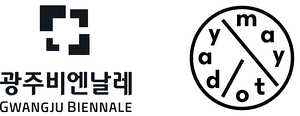Part of MaytoDay
June 3–July 5, 2020
87 Yulgok-ro 3-gil, Jongno-gu
03062 Seoul
South Korea
This year is the 40th anniversary of the May 18 Democratization Movement. It marks a civic demonstration in 1980, which was a pivotal event in South Korea that catalyzed its move toward democracy. Spring of Democracy is commissioned by the Gwangju Biennale Foundation to remember this defining moment in South Korea’s history.
The exhibition is organized across two floors of Art Sonje Center in Seoul. On one floor, viewers are first invited to walk back in time, weaving their way between photographs taken by Korean journalists during the ten days of civic resistance against the military government and works of art generated over the span of four decades that represent various moments of this important democratization movement and its resonance in contemporary South Korean society. Presented works include woodcut prints from the 1980s by Hong Sung-dam, one of the key figures of minjung art (people’s art) movement, and Yeon-gyun Kang’s iconic painting Between Heaven and Earth I (1981), usually housed at the Donggang University Museum in Gwangju that documents the first hand experience of these intense days of brutality, literally depicting the blood on the streets. Other works, made in the 2000s for the Gwangju Biennale, by South Korean artists, such as Navigation ID, From X to A (2014) by Minouk Lim or Heaven and Earth (2007) by Lee Bul, link the democratization movement in their native country to wider histories of state repression and Cold War conflict. The monoprints Dust to Dust (2014) by Romanian artist Mircea Suciu and Permanent Holydays, how come some leave and others stay behind? (2016), a film by the Mexican artist collective, Cooperativa Cráter Invertido, draw from diverse archival materials and references to recent global histories of protest to create their own languages of the archival.
The other floor of Spring of Democracy juxtaposes different languages of archiving and dissemination, ranging from a selection of minjung woodcuts, titled A Testimony of Resistance, guest curated by art historian Jinha Kim to Suntag Noh’s Forgetting Machines (2006-2020) which reflects upon memorialization through funerary photography. Presented alongside these works is an archive-like workstation featuring artist Seung Woo Back’s A Mnemonic System (2018), a series of images of former armed forces’ Gwangju Hospital published over 52 days in the daily newspaper Chonnam IIbo (Gwangju), and literature on the May 18 Democratization Movement. Footage and photographs taken by German journalist Jürgen Hinzpeter during May 1980, and featured in his film Südkorea am Scheideweg [South Korea at the Crossroads] brought the violence by the military junta to televisions in West German households but also to the Korean foreign workforce sent abroad. An extensive dossier of declassified documents compiled by the American journalist Tim Shorrock introduces the role that the American government played in South Korea’s military dictatorship.
Spring of Democracy, furthermore, reviews how documentation of the civilians’ resistance has permeated popular culture through cinematic imagination. Gwangju Story (1996), photographs by South Korean photographer Heinkuhn Oh that he took on the film set of A Petal (1996), a re-enactment of the 1980 uprising, and Escaping Gwangju (2000), posters of a imagined film about a low ranking solider in the South Korean army attempting to escape the memory of torture, span both floor levels of the exhibition. These works offer a bridge between the images taken by journalists in May 1980 and a cinematic language that appeals to audiences too young to have been present themselves.
As people around the world return to the street to protest and call for change in the face of insurmountable political impasse, Spring of Democracy encourages the viewer to not only review the May 18 Democratization Movement as a historic moment in the past, but also to use this 40th anniversary as an opportunity to look towards the future of democracy.
Spring of Democracy
Contributors: Bae Young-hwan, Seung Woo Back , Jürgen Bertram, Cooperativa Crater Invertido, Hong Sung-dam, Seung-chan Gwon, Jürgen Hinzpeter, Yeon-gyun Kang, Lee Bul, Chang-seong Lee, Minouk Lim, Kyung-taek Na, Suntag Noh, Heinkuhn Oh, Tae-kyu Park, Mircea Suciu, Tim Shorrock
Curators: Ute Meta Bauer and assistant curator Kathleen Ditzig
Commissioner: Sunjung Kim, President of Gwangju Biennale Foundation
Organizers: Gwangju Metropolitan City, Gwangju Biennale Foundation, Asia Culture Center & Asia Culture Institute
Co-organizers: May 18 Memorial Foundation, 5·18 Archive, Art Sonje Center, The Secretariat of the May 18th 40th Anniversary Seoul Commission
Spring of Democracy is part of MaytoDay, a special exhibition program hosted by the Gwangju Metropolitan City and the Gwangju Biennale Foundation to commemorate the 40th anniversary of the May 18 Democratization Movement. MaytoDay is a collaboration between Gwangju Biennale Foundation, 5·18 Archive, May 18 Memorial Foundation, Akademie der Künste der Welt (Cologne), Art Sonje Center (Seoul), ex ESMA (Buenos Aires), and Kuandu Museum of Fine Arts (Taipei).
Press contact: maytoday [at] gwangjubiennale.org


